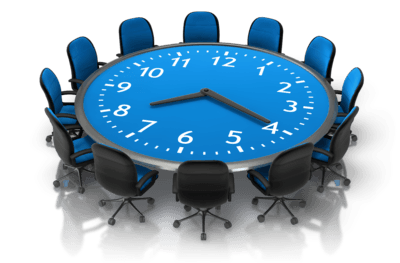Do you and your team members lose track of the things you discussed in your project meetings? Who was to complete that action item? Who owns that risk? What did we decide to do? Sound familiar? Let's talk about how to master project meeting minutes.

When I published my blog post entitled Four Meeting Problems, I received several questions about recording minutes. Questions included:
- Who should scribe?
- What makes a good scribe?
- What should be included in the minutes?
- How do you ensure the minutes are accurate?
- Where should we store minutes?
Allow me to share a few tips. I am reminded of George Orwell's comment: "Sometimes the first duty of intelligent men is the restatement of the obvious." For both newbies as well as experienced project managers, it is good to get back to the basics.
More...
Who Should Scribe?
Some project managers prefer to scribe themselves. These individuals serve as facilitator and scribe. However, for meetings with seven or more people, I strongly recommend another person scribe.
Think of meetings as opportunities for personal development of a project administrator or junior project manager. As they scribe, they learn about the company, its culture, team dynamics, and the project itself.
"Sometimes the first duty of intelligent men is the restatement of the obvious." —George Orwell
Attributes of Great Scribes
Listening and capturing the critical aspects of a meeting is a tough job. Here are a few attributes you should look for in a scribe.
- Effective listener
- Critical thinker
- Ability to multi-task
- Ability to think at multiple levels
- Good organization and integration skills
What Should Be Included in Project Meeting Minutes?
Minutes should include every word spoken in a meeting. Rather, the minutes should be concise and include the following:
- Risks. Capture threats and opportunities in your risk register.
- Action Items. The action items should include the date of the action item, actions to be taken, the person responsible, due date, status (Open or Closed).
- Issues. Issues are threats that have occurred and require management. Issues should include the date of issue, description, the person responsible, due date, status.

- Decisions. What decisions were made? Who made the decision? What was the date of the decision? What factors contributed to the decision?
Watch this YouTube Video: Four Things to Include in Your Meeting Minutes (4:13)
Read more: How to Actually Make and Execute Better Decisions
How to Validate Meeting Minutes
The meeting facilitator, often the project manager, is ultimately responsible for the accuracy of the minutes. How can project managers ensure quality minutes?
- Summarize and review RAIDs during your meetings as they occur
- Review and validate RAIDs at the end of your meetings
- The scribe should draft and send minutes to the project manager
- The project manager should review and edit minutes
- Distribute minutes to the project team and required stakeholders along with a note requesting review and feedback on the content.
Where Should Meeting Minutes Be Stored?
If you use word processing documents, store the minutes in a predefined location. Make sure your team members have access.
You may wish to capture and transfer RAIDs into a project information system. The system should allow for easy retrieval and navigation. There are numerous tools on the market for this purpose. These tools allow project team members to view RAIDs within a project or across a program (e.g., multiple projects being managed toward a common set of goals).
FREE Meeting Minutes Template
Don't have a template for minutes? Click here to download my template. Store the template in a location you can easily access. Feel free to modify the template as you see fit.
Homework
Review your projects. What are your communication problems? Are the problems related to poor minutes? Determine how you can improve the process of capturing meeting minutes.

